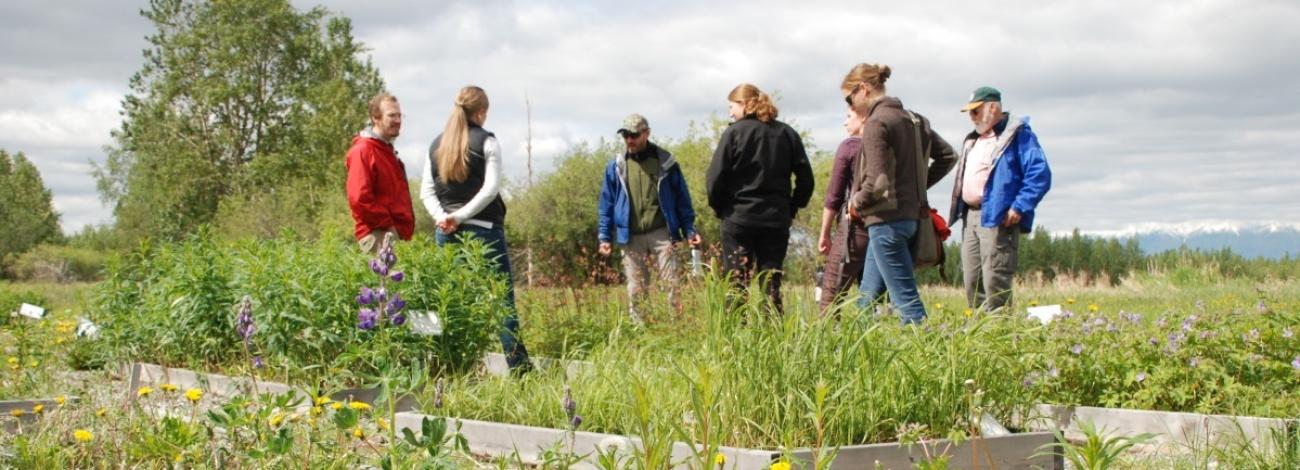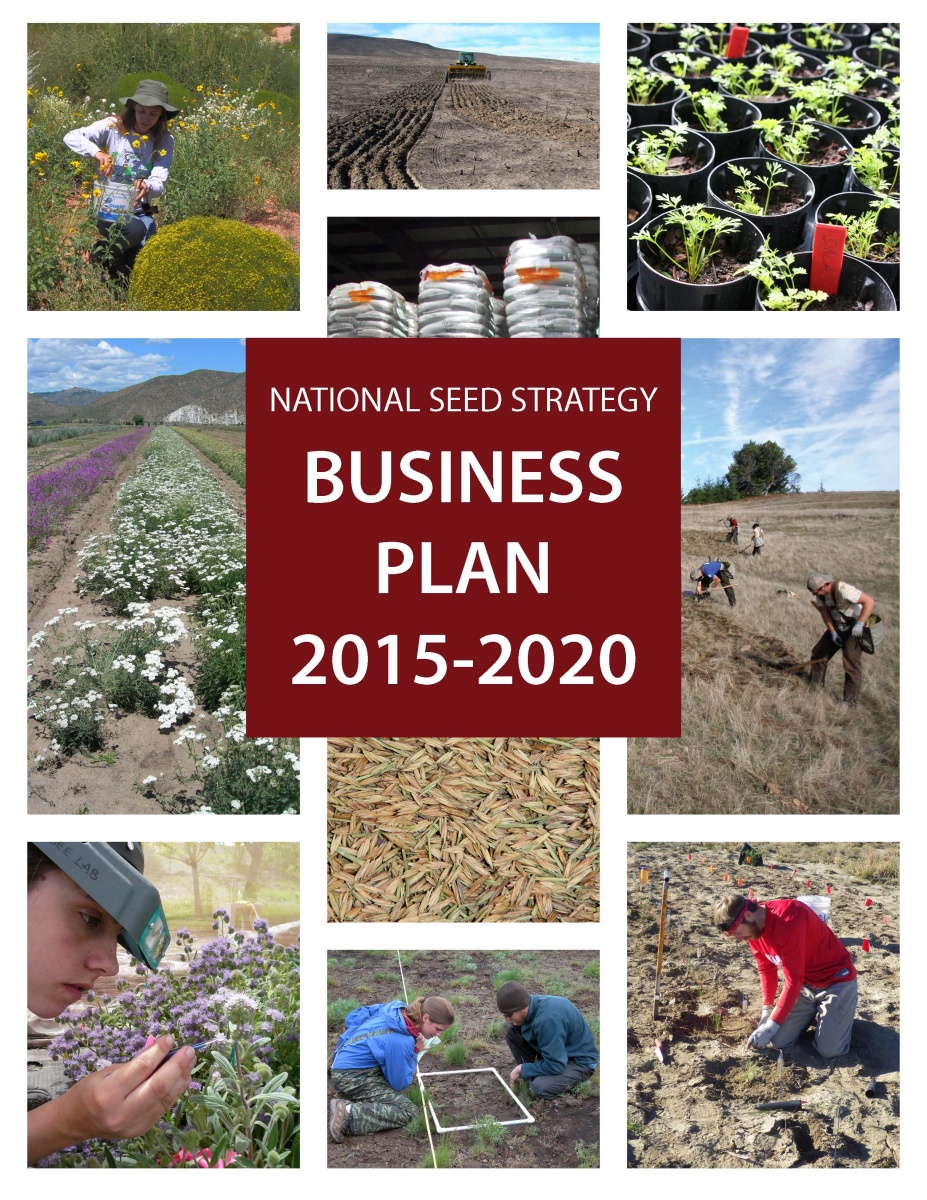
National Seed Strategy
The National Seed Strategy for Rehabilitation and Restoration was written in 2015 by the Plant Conservation Alliance Federal Committee in cooperation with Federal and non-Federal partners. The National Seed Strategy was created for the same reason the BLM Plant Conservation & Restoration Program was started – large-scale disturbances like wildfires and other stressors threaten plant communities and damage ecosystems, yet the demand for native seed continues to outpace the supply.
The National Seed Strategy was written to address this demand for native seed by providing more coordination and a framework for building an adequate supply of native seeds.
The mission of the National Seed Strategy is: To ensure the availability of genetically appropriate seed to restore viable and productive plant communities.
Read the National Seed Strategy for Rehabilitation and Restoration
Hot Off the Press
National Seed Strategy Story Map
National Seed Strategy Progress Report, Fiscal Year 2022 and 2023
In January 2024, the Plant Conservation Alliance (PCA) Federal Committee finished their progress report on fiscal year 2022 and 2023 (FY22 and FY23).
National Academies Final Report on Native Seed Needs and Supply
The National Academies of Sciences, Engineering, and Medicine released "An Assessment of Native Seed Needs and the Capacity for Their Supply: Final Report" in January 2023. The report completes the second and final stage of the study, which began in 2020, and was sponsored by the Bureau of Land Management.
National Seed Strategy Progress Report, Fiscal Year 2021
In October 2022, the Plant Conservation Alliance (PCA) Federal Committee finished their progress report on fiscal year 2021 (FY21). The report is third in a series of progress reports that meet Objective 4.3 of the National Seed Strategy: to gauge progress on a regular basis. The report captures 163 projects which were undertaken by 17 federal agencies and their partners between October 1, 2020, and September 30, 2021.
National Seed Strategy Progress Report, 2015-2020
In August 2021, the Plant Conservation Alliance (PCA) Federal Committee finished their progress report on the first five years of the National Seed Strategy. Although the 460 projects captured in the progress report are only a sampling of projects implementing the National Seed Strategy nationwide, the progress made since 2015 is truly inspirational. Download the full progress report or the one-page fact sheet.
National Academies interim report on native seed needs and supply
In October 2020, the National Academies of Sciences, Engineering, and Medicine released an interim report for the first ever independent assessment of native seed needs and capacities in the U.S. These efforts, sponsored by the Bureau of Land Management, directly support Goal 1 of the National Seed Strategy: “Identify Seed Needs, and Ensure the Reliable Availability of Genetically Appropriate Seed.”
Large survey of native plant material users throughout the Eastern US
In 2018, the Mid-Atlantic Regional Seed Bank (MARSB) conducted the first survey of native plant material users from across the entire Eastern United States in order to better understand eastern trends of native plant material use and availability. Of the 760 respondents, 74% expressed a preference for local ecotypes, and only 0.3% for cultivars. Read the full report.
Open Access Native Seed Standards for Ecological Restoration
The First International Principles and Standards for Native Seeds in Ecological Restoration are now available in a Special Issue of Restoration Ecology. This Special Issue was developed by the International Network for Seed-based Restoration (INSR), a thematic section of the Society for Ecological Restoration, and is completely Open Access (free to read, download and share), thanks in large part to support from the Bureau of Land Management. Download a pdf of the Standards for Native Seeds in Ecological Restoration.
Resilience through Restoration
Human influences such as invasive species, altered wildfire regimes, and natural disasters are negatively affecting our native plant communities and the many species that depend upon them. Our ability to repair these damaged lands and stem the loss of cultural and economic benefits to society depends upon appropriate seed, research, decision tools, and public support for ecological restoration. Through collaboration and communication, we can more effectively manage public lands, rebuild resilient native plant communities, and protect our valuable natural resources.
The National Seed Strategy fosters interagency collaboration to guide the development, availability, and use of seed needed for timely and effective restoration. The Strategy includes four goals, with associated objectives and initial actions (2015-2020) to improve seed supplies for restoring healthy and productive native plant communities.
The National Seed Strategy for Rehabilitation and Restoration helps guide ecological restoration across large landscapes of the United States, especially lands damaged by rangeland fires, invasive species, severe storms and drought.
Strategy actions are centered around four major goals:
GOAL 1: Identifying and Quantifying Seed Needs
Identify Seed Needs, and Ensure the Reliable Availability of Genetically Appropriate Seed
- Objective 1.1: Assess the Seed Needs of Federal Agencies and the Capacity of Private and Federal Producers
- Objective 1.2: Assess Capacity and Needs of Tribes, States, Private Sector Seed Producers, Nurseries, and Other Partners
- Objective 1.3: Increase the Supply and Reliable Availability of Genetically Appropriate Seed
GOAL 2: Undertaking Research and Improving Technologies for Seed Production and Use
Identify Research Needs and Conduct Research to Provide Genetically Appropriate Seed and to Improve Technology for Native Seed Production and Ecosystem Restoration
- Objective 2.1: Characterize Genetic Variation of Restoration Species to Delineate Seed Zones, and Provide Seed Transfer Guidelines for Current and Projected Future Environmental Conditions
- Objective 2.2: Conduct Species-Specific Research to Provide Seed Technology, Storage, and Production Protocols for Restoration Species
- Objective 2.3: Conduct Research on Plant Establishment, Species Interactions, and Ecological Restoration
- Objective 2.4: Develop or Modify Monitoring Techniques, and Investigate Long-Term Restoration Impacts and Outcomes
GOAL 3: Developing Tools for Land Managers
Develop Tools that Enable Managers to Make Timely, Informed Seeding Decisions for Ecological Restoration
- Objective 3.1: Develop Training Programs for Practitioners, Producers, and Stakeholders on the Use of Genetically Appropriate Seed for Restoration
- Objective 3.2: Develop Native Seed Source Availability Data and Tools for Accessing the Data
- Objective 3.3: Integrate and Develop Science Delivery Tools to Support Restoration Project Development and Implementation
- Objective 3.4: Build on Ecological Assessments and Disturbance Data, and Provide Training that will Allow Managers to Anticipate Needs and Establish Spatially-Explicit Contingency Strategies
GOAL 4: Ensuring Good Communications
Develop Strategies for Internal and External Communication
- Objective 4.1: External Communications: Conduct Education and Outreach through the Plant Conservation Alliance Network
- Objective 4.2: Internal Communications: Distribute and Implement the Strategy Across Agencies, and Provide Feedback Mechanisms
- Objective 4.3: Report Progress, Recognize Achievements, and Revise Strategy
Organizations and individuals at the national, state and local level all will contribute to common goals, pooling resources, sharing information and achieving results for advancing plant conservation on a broad scale.
Plant Conservation Alliance
The Plant Conservation Alliance developed the National Seed Strategy in 2015 to address widespread shortages of native seed. Learn more about this network of over 400 public and private partners dedicated to native plant conservation.

